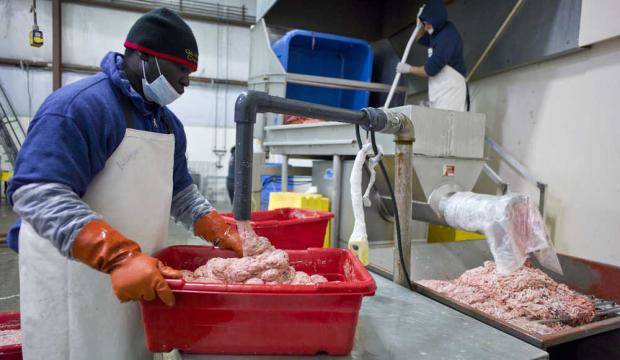The Alaska Seafood Marketing Institute will push back against a steep seafood tariff suggested by the Trump Administration.
In a board meeting Thursday morning, ASMI executive director Alexa Tonkovich said the organization is preparing a draft letter to the Office of the U.S. Trade Representative about the importance of Alaska seafood.
ASMI’s action comes as the USTR considers a proposal to levy a 10 percent tariff on $200 billion worth of Chinese imports. Since that proposal was announced in early July, the USTR has announced that the tariff could be increased to 25 percent.
Among the items on the tariff list is Alaska seafood sent to China for processing.
“We believe there is value in ASMI as an apolitical industry representative (speaking up),” Tonkovich said, and the board agreed to consider the draft.
“I know that other industry groups are kind of looking for ASMI to take the lead because of their connection with (the National Fisheries Institute) and their representation of the Alaska industry,” said board member Tom Enlow, who works for the seafood company Unisea.
“We better do it, definitely,” said board chairman Jack Schultheis of Kwik’ Pak Fisheries.
ASMI is the joint marketing arm for fisheries across Alaska and is funded by a small tax on catches as well as federal grants and state assistance. This year, the Alaska Legislature approved a budget of less than $21 million for the agency.
While ASMI normally stays away from political topics, the trade war begun by President Donald Trump has the potential to have significant impacts on Alaska’s fishing industry.
After fish are caught here, more than half head to processing plants to be headed, gutted and frozen for shipment to China. There, they are turned into fish sticks, salmon patties and other products. Those products are then re-frozen for shipment and sale back to the United States.
That makes seafood vulnerable to tariffs levied by the United States and retaliatory tariffs that may be issued by China.
On Thursday, the same day ASMI’s board of directors considered whether to intervene in the tariff process, the Wall Street Journal published a story detailing how Alaska’s seafood industry is uniquely vulnerable to the crossfire of a trade war.
More than half of Alaska’s seafood is shipped overseas for secondary processing, and seafood caught in Alaska represents 60 percent of all seafood caught in the United States.
In Alaska, the fishing industry (including processing) employs more people (and pays more wages) than mining and oil and gas extraction combined.
Tonkovich said a draft comment will be submitted to board members for their approval by the end of this week or early next week, then submitted to federal trade officials by early next month.
It will be shared with other fisheries organizations, including the National Fisheries Institute, the Pacific Seafood Processors Association, Groundfish Forum and any other group that may want to offer its own comments.
“This is a little unusual, but in speaking with a lot of different industry groups, and as we start to understand the impact of these tariffs, it’s important that ASMI’s voice be heard,” Tonkovich said by phone after the meeting.
She said she doesn’t see the comment as pushback but an attempt to inform the USTR about how its actions have the potential to affect Americans.
“If you’re putting a tariff on seafood, you’re not just hurting China,” she said.
• Contact reporter James Brooks at jbrooks@juneauempire.com or 523-2258.

